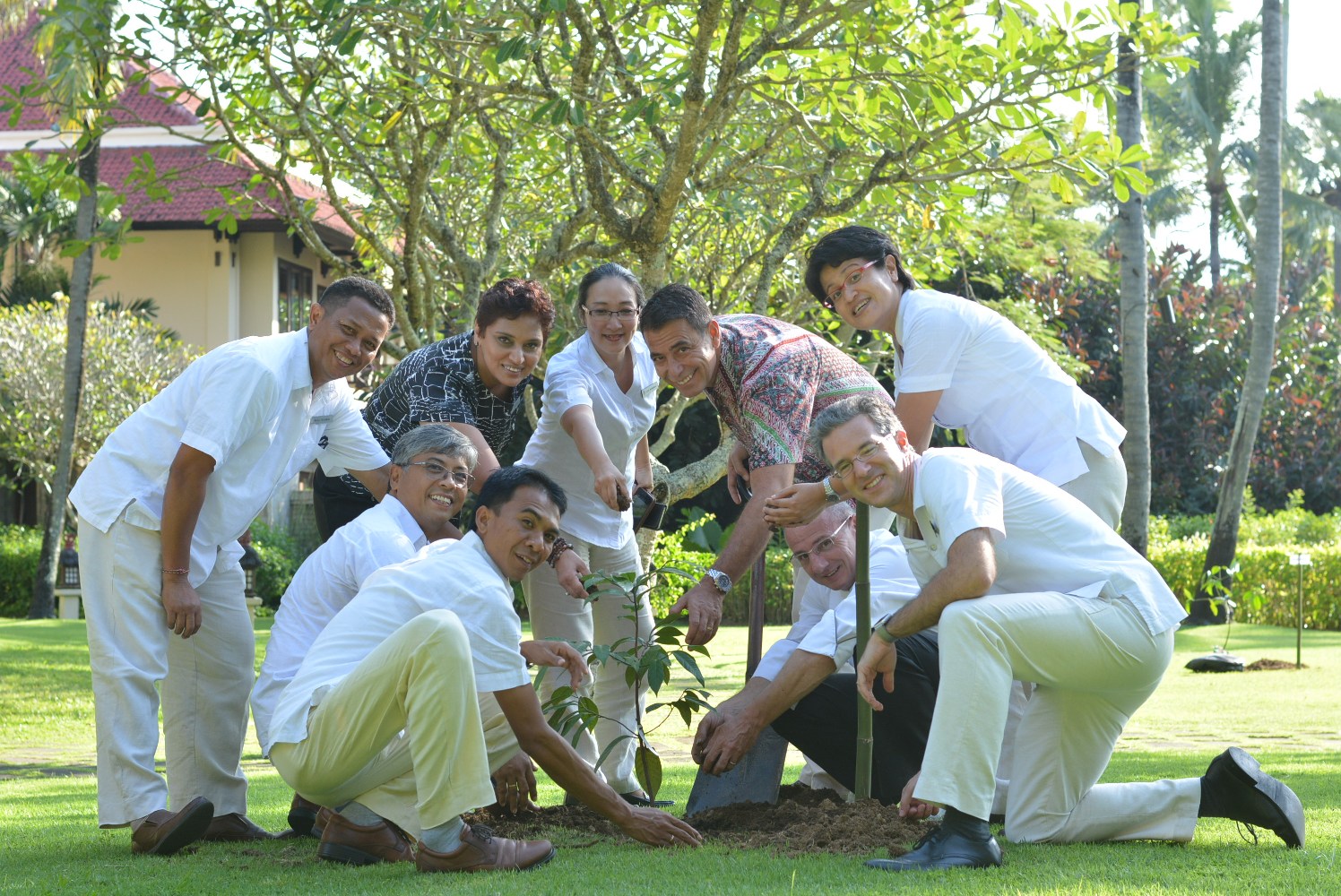We all know the pleasure of taking a rest under a shady tree on a hot sunny day. Trees and plants are our friends; they create a sense of harmony on Earth, they are the breath of life, and an important source of food, medicine, parchment, cushion-stuffing, clothing, utensils and water carriers, while the timber is utilized in furniture-making, boat-building, carpentry and construction. For the Balinese Hindus, trees and their flowers, fruits, leaves and branches, also play an important part in rituals and ceremonies.
InterContinental Bali Resort is therefore proud to announce the launch of its botanical garden, dedicated to the cultivation and enjoyment of the sacred and significant trees that are used by the Balinese for their ceremonies in keeping with ‘Tri Hita Karana’, the Balinese Hindu philosophy of life.
The concept of Tri Hita Karana, meaning the ‘three sources of life’, holds that God, humanity and nature are inseparably linked, and that spiritual wellbeing, happiness and prosperity can only be attained through a balanced existence. This extends into maintaining a harmonious relationship between humans and God (Parhyangan), humans and other humans (Pawongan), and humans and the environment (Palemahan) into an integral unity. The Balinese regard all living things as manifestations of the Hindu unmoved mover, and trees are no exception. It is considered wrong to cut down a tree without first making offerings and asking its pardon or permission. Celebrated every 210 days, Tumpek Wariga Day is a reminder of the importance of trees in Balinese daily life, while also serving as a message for the Balinese to preserve trees. Indeed, trees in Bali are worshipped and revered, and are always a most highly appreciated source of shade.
The Resort’s 750-square-metre botanical garden will showcase some of Bali’s most sacred trees, all of which are used in the Panca Yadnyaor five rituals that every Balinese Hindu must perform in order to ensure an orderly transition of his or her spirit from birth to death and later reincarnation. These duties require the presentation of offerings to the gods (Dewa Yadnya), offerings to the spirits (Bhuta Yadnya), offerings to the ancestors (Pitra Yadnya), offerings to priests and holy people (Rsi Yadnya), and offerings to humans (Manusa Yadnya).
The Nagasari tree (Palaquium rostratum) is normally used for the Dewa Yadnya as part of the Rsi Ghana ceremony where the nagasari leaves are placed on the Tumpeng Sia offering. Nagasari trees blossom throughout Bali and the wood from the tree is used for protection against black magic, lightning, and dangerous animals.
The Pudak tree (Pterocarpus), which is also known as Burmese rosewood or red sandalwood is used for the Manusa Yadnya. After giving birth, the mother will be purified with holy water laced with the fragrant yellow flowers of the pudak. The resin from the bark of this medicinal tree can be used as an astringent and the bark is believed to be a cure for dysentery.
The Kayu Tulak tree (Schefflera) is also known as the umbrella tree because its leaves are reminiscent of a collection of small umbrellas. It is used in the Nangluk Merana ceremony, as part of the Bhuta Yadnya, where the leaves are placed in a temporary shrine known as the Sanggah Cucuk, which looks a little bit like a small open bamboo tent sitting on the top of a pole. The leaves are used in the Isu Isu offering for the Penglungkatan ceremony. Another revered tree that was once found in every village but is now becoming rare, is the Majegau (Dysoxylum densiflorum), which is Bali’s floral emblem. Akin to mahogany, and renowned for its strength and beauty, its fragrant wood can only be used in sacred buildings or in the construction of cremation towers. Used in the Pasepan (incense burner) at the Dewa Yadnya ritual, it is burnt together with other woods that give off a fragrant smell. Finally, the Cendana or sandalwood tree (Santalum album) evokes a world of ancient mystery, sanctity, and devotion. The virtues of its prized aromatic heartwood have been sung for thousands of years. The wood of the tree is made into a paste using sandalwood powder and this paste is integral to rituals and ceremonies, to mark religious utensils, to decorate the icons of the deities, and to calm the mind during meditation and prayer. It is believed that the Goddess Lakshmi lives in the sandalwood tree, and its wood is used for worshipping the God Shiva. Its bark is also used in the Pasepan incense burner to impart a fragrant smell during the Dewa Yadnya ceremony.
The botanical garden at InterContinental Bali Resort is a unique concept at a Bali hotel. The garden will eventually be offered as a wedding venue.

